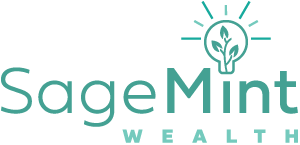
Financial Independence: What Does It Mean, and How Can You Achieve It?
May 2, 2024
What to Do If Your Identity Is Stolen: Essential Steps to Safeguard Your Finances
May 28, 2024Transitioning from traditional employment to self-employment marks an exhilarating yet challenging journey. With the allure of independence and control comes a host of new responsibilities, particularly when it comes to managing personal finances.
To ensure you’re taking steps to meet both your immediate financial needs and longer-term goals, careful planning and vigilance are essential. By equipping yourself with a thorough understanding of the financial implications of self-employment and taking proactive steps to protect your financial well-being, you can embrace this new chapter of life with confidence.
Traditional Employment vs. Self-Employment
Self-employment and traditional employment differ in many ways, perhaps most notably in the realm of personal financial management. While traditional employment often provides a predictable income, structured benefits, and streamlined system of paying taxes, self-employment requires a more hands-on approach to meeting your immediate financial responsibilities and securing your financial future.
Here’s a more detailed overview of how your financial responsibilities change once you step into self-employment:
- Taxes. One of the key differences between traditional employment and self-employment lies in the management of taxes. While W-2 employees can automatically withhold taxes from their paychecks, self-employed individuals must make quarterly estimated tax payments based on their income throughout the year.
- Insurance. Employee benefits often include cost-effective access to health insurance, as well as dental, vision, disability, and life insurance in many cases. In contrast, self-employed professionals must secure their own insurance, which can be more costly and complex to manage.
- Retirement Savings. Traditional employees often contribute to employer-sponsored retirement plans such as 401(k)s, which may even be supplemented by employer contributions. Meanwhile, self-employed individuals must establish and contribute to their own retirement plans like SEP IRAs or Solo 401(k)s, requiring more personal involvement and planning.
Managing these aspects of your personal finances effectively is crucial for financial stability and confidence in self-employment. Fortunately, there are steps you can take to position yourself for long-term success, paving the way for a financially successful and personally fulfilling future.
6 Steps to Financially Prepare Yourself for Self-Employment
The following steps can help ensure you’re financially prepared to withstand potential setbacks and take advantage of the myriad opportunities that arise as your new venture evolves.
#1: Build an Emergency Fund
The income from self-employment can be unpredictable, particularly in the early stages. This variability in income can make it difficult to meet near-term financial obligations, both business and personal.
To mitigate this risk, an emergency fund is critical. This fund serves as a financial buffer that can keep you afloat during slow periods when your income may not cover your expenses.
Many financial experts recommend having at least six to twelve months’ worth of living expenses saved for emergencies and unexpected expenses. However, depending on your individual circumstances and risk tolerance, you may want to save more before pursuing self-employment.
#2: Create a Bare-Bones Budget
The transition to self-employment may mean taking a meaningful pay cut, at least initially, as you work to establish your business and customer base. If your lifestyle is more commensurate with your previous salary, you might want to consider eliminating non-essential expenses until your income normalizes.
A bare-bones budget outlines the minimum amount you need to cover your basic expenses, such as mortgage or rent payments, utilities, groceries, and insurance. This budgeting practice can also make it easier to manage your finances during periods when business income is lower than usual. By proactively reducing your spending, you can direct more resources toward your growing business without the pressure of meeting excess lifestyle demands.
#3: Separate Business and Personal Expenses
Separating your business and personal expenses is a fundamental step for anyone considering self-employment. This clear distinction not only simplifies accounting and tax reporting but also plays a crucial role in maximizing your tax deductions.
When you mix your expenses, it becomes more challenging to track what you can legitimately claim as a business expense, potentially leading to missed deductions or errors in tax filings. By maintaining separate bank accounts and credit cards for business use, you can create a straightforward financial trail.
This setup simplifies the process of compiling financial statements and preparing for tax season. Moreover, in the event of an IRS audit, having clearly defined business expenses can expedite the process and reduce the likelihood of penalties.
#4: Determine Your Insurance Needs
Self-employment often means taking on the responsibility of securing your own insurance, which can vary significantly compared to employer-provided coverage.
First, you’ll likely need to find your own health insurance. One viable option is to explore the Affordable Care Act (ACA) marketplace where you can compare different plans and find one that suits your budget and health requirements. Alternatively, if available, joining a spouse’s health plan can be a cost-effective and convenient way to obtain comprehensive coverage.
Liability insurance is another important consideration for self-employed professionals. This type of insurance protects against claims resulting from injuries or damages to other people or property. Whether you’re a consultant, contractor, or small business owner, having liability insurance is crucial to safeguard your business and personal assets from potential lawsuits.
Equally vital for self-employed individuals is disability insurance, which provides income protection if you’re unable to work due to illness or injury. According to the Council for Disability Awareness, about 5% of working Americans experience a short-term disability due to illness, injury, or pregnancy each year. Since self-employed workers lack the safety net of employer-provided disability coverage, securing your own policy can help protect your financial stability if you’re unable to work for an extended period.
#5: Create a System for Paying Quarterly Estimated Taxes
Managing taxes is a critical and often complex aspect of self-employment. Not only are you responsible for paying self-employment taxes—which include Social Security and Medicare taxes, also known as FICA—but you must also navigate business deductions and the process of making quarterly estimated tax payments.
Since there’s no employer to withhold payroll taxes from your earnings, the IRS requires self-employed individuals to make estimated tax payments every quarter to cover their expected tax liability for the year. This system helps prevent large tax bills at the end of the year and potential penalties for underpayment.
Setting up a reliable system for these payments is essential. Here’s a simple approach:
- Calculate Your Estimated Income. Begin by estimating your yearly income. This estimate will form the basis for calculating how much tax you owe each quarter.
- Set Aside Taxes. As you earn, it’s a good practice to set aside a portion of each payment into a dedicated tax savings account. This makes the funds readily available when tax payments are due and reduces the temptation to use these funds for other expenses.
- Use IRS Forms and Resources. IRS Form 1040-ES includes a worksheet to help you estimate your taxes and provides vouchers for submitting your payments. Alternatively, you can pay quarterly estimated taxes online through the IRS website, which is a secure and convenient option to manage and track payments.
By establishing and adhering to a system for paying your quarterly estimated taxes, you can maintain better control over your finances, avoid surprises during tax season, and ensure compliance with tax laws—all of which can facilitate a smoother financial management experience in self-employment.
#6: Open a Self-Employed Retirement Account
Saving for retirement as a self-employed individual often poses unique challenges and opportunities compared to traditional employment. Without the structure and support of an employer-sponsored retirement plan, you’ll need to be proactive in setting up a qualified retirement account and contributing to it regularly.
Fortunately, there are several retirement account options available specifically to self-employed individuals. Examples include:
- Solo 401(k). A Solo 401(k) is suitable for business owners with no employees (other than a spouse). This type of plan allows you to contribute both as an employer and an employee, significantly increasing the contribution limit compared to other plans. In 2024, for example, the contribution limit is $69,000, not including catch-up contributions for those 50 and older.
- SEP IRA (Simplified Employee Pension). A SEP IRA can be ideal for those with fluctuating income since you can contribute more in good years and less during slower periods. The IRS allows you to contribute up to 25% of your earnings to a SEP IRA, not to exceed a maximum contribution of $69,000 in 2024.
- SIMPLE IRA (Savings Incentive Match Plan for Employees). This may be a good option if you start with a small number of employees (less than 100). While a SIMPLE IRA allows both employer and employee contributions, providing a straightforward and low-cost setup, the contribution limits are lower than those for a Solo 401(k) and SEP IRA. In 2024, you can contribute up to $16,000 of your earnings, plus up to a 3% matching contribution.
As your business becomes more established and your income grows, you may want to consider alternate retirement plan options based on your objectives. For example, a cash balance plan can be an effective way to significantly boost your retirement savings down the road, especially if you fall behind during the early years of self-employment.
Navigate Self-Employment Confidently with SageMint Wealth
Taking the leap into self-employment can be an exciting and empowering move toward achieving financial independence. However, it’s essential to engage in proactive planning and maintain disciplined financial management to ensure stability and foster long-term success.
In navigating this transition, professional guidance can prove invaluable. At SageMint Wealth, we offer tailored advice and support to help you craft a comprehensive financial plan that addresses both your immediate needs and future aspirations. Contact us today to begin your self-employment journey with confidence.
Related posts
Live Well. Do Good.












